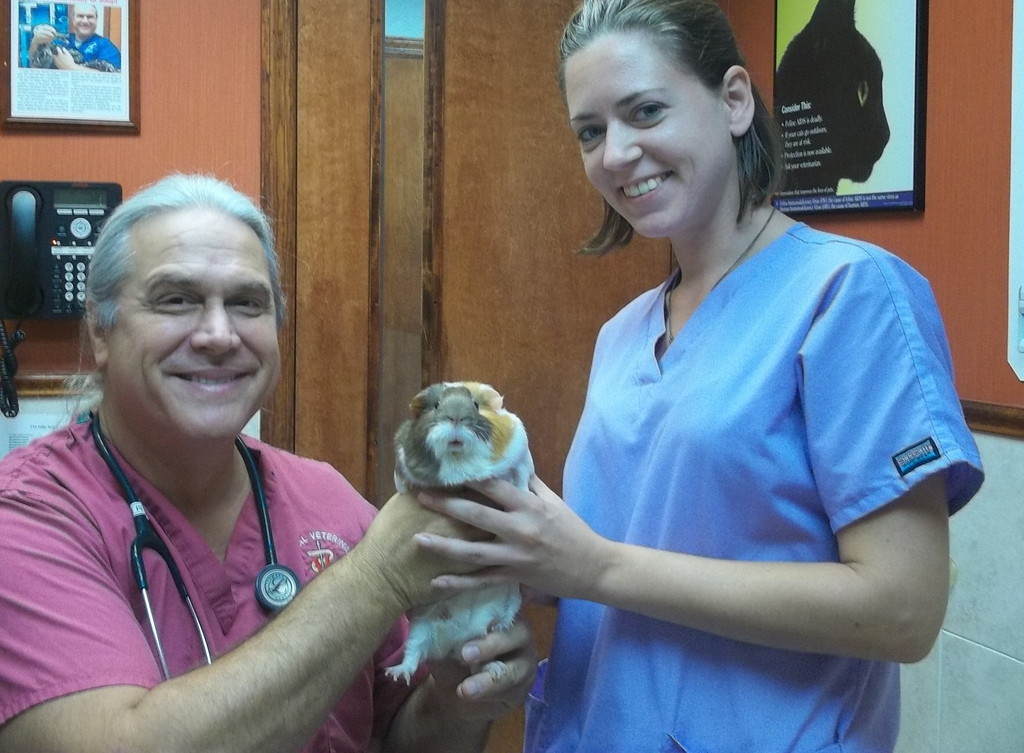Marshmallow, guinea pig, returns to class at HALB
Marshmallow, Morah Karen Yager’s beloved classroom guinea pig pet, almost didn’t make it to the start of the school year. Happily, she’ll be back with the four-year-olds when nursery classes resume at the Hebrew Academy of Long Beach’s Lev Chana Early Childhood Center, thanks to the efforts of a kind veterinarian.
Last year, Morah Karen noticed a growth on Marshmallow’s back and her concern increased over the summer, as it grew and began to ooze. At the urging of the center’s co-director Felice Ackerman, Yager took the ailing guinea pig to a vet.
The vet’s prognosis: It was a tumor and it had to be removed.
Dr. John Charos, a vet at the 24/7 Central Veterinarian Associates in Valley Stream, “saw the look on my face — $1,077 for the surgery without the medicine,” Yager recalled. “He said don’t worry about it.”
“Marshmallow had her surgery and I am sure she will continue to bring joy and excitement to the children in my classroom.”
Yager described the “tremendous effect” the five-year-old guinea pig has on children in the classroom. When a child is shy she will “go over and talk to her and tell her things. They are very interested and curious about her.”
She said Marshmallow has a calming effect on the children and helps them build confidence.
“Each kid gets something else from it,” she said. “Every year Marshmallow creates new joys and I learn from the guinea pig.”
“It’s a hassle to have any animal but with the effect on the kids — you give and you get back. It’s not only a mitzvah, it gives you something back in return. So many lessons you learn when you care for a pet and you [learn to] care for others even if it is a pet.
“It shows the children the mitzvah of caring for animals, that we have to feed our animals before we feed ourselves. The children enter the room, put their coats and lunch in their cubbies and run to Marshmallow. They bring whatever vegetables they have from home that the parents send.”
Yager noted that the children also learn food limits. “Just as we have to limit what we eat, we can give the guinea pig just so much.”
Marshmallow comes to the side of her cage near the children when they work on computers or Yager reads a story. She squeaks when they open their lunch bags, reminding them “of the mitzvah that we have to feed her before we eat.” They also clean her cage every Friday “just as we clean our house for Shabbat.”
Yager plans to use Marshmallow’s hospital and doctor experience to “allay [the childrens’] fears about doctors” and “how she was a mitzvah girl and took her medicine even though it was yucky and because she took her medicine and eats healthy she will be fine with Hashem’s help.”
“We try to help out where we can with the education of our children,” Dr. Charos said. “It’s important how children are exposed to pets and their care.” They also contribute work at the Alley Pond Environmental Center, a mini zoo, he said.
Dr. Charos said they were able to remove the tumor completely and there shouldn’t be any regrowth. It was a cancer but will not metastasize, a malignancy that if it were to come back, it would regrow in the same area. He said this is common in pets as it is in adults as they age. He said Marshmallow’s age is equivalent to that of a human 60 year old and she is likely to live a few more years.
Dr. Charos stressed the importance of children’s interaction with animals.
“Some children rarely speak in a group setting but come out of their shell because of their interaction with a pet. A lot of families don’t have pets. They don’t look at a guinea pig, rabbit or snake as an equal form of life. If they have exposure to it, then they realize that all forms of life are important. All lives are valuable.”

 44.0°,
Mostly Cloudy
44.0°,
Mostly Cloudy 




